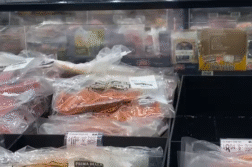ORLANDO, FLA. (Ivanhoe Newswire)– Are you eating a healthy diet? Well, according to the CDC, only nine to 12 percent of people eat enough fruits and veggies. A healthy diet is important for everyone. But certain foods are particularly beneficial for helping issues that affect women. Superfoods for women
Women have unique health needs and certain foods can help them more than others. First up, edamame. It’s full of fiber, good fats, and estrogen-like compounds called isoflavones (ai-sow-flay-vnz) which may help control hot flashes during menopause. Kale is another superfood for women. It’s loaded with vitamin K which works with calcium and vitamin D to keep bones strong and healthy. Also, consider spinach. It contains folate which is important for a baby’s development during pregnancy. It also may lower a woman’s risk for dementia and colon cancer. Beans are packed with protein and fiber. They can lower risk factors for heart disease. Papaya contains lycopene (lai-kow-peen), which may reduce a woman’s risk of cervical and breast cancer, while also keeping cholesterol and blood pressure levels in check. Just eight ounces of plain yogurt gives you more than a third of your calcium for the day. Ground flaxseed contains lignans plant compounds that act like estrogen and can lower your risk for breast cancer.
Another superfood on our list: berries. They contain a lot of vitamin C, which women need to build collagen, the protein that keeps their skin smooth and firm. They also may keep your brain sharper as you age.
Sources:
https://www.cdc.gov/mmwr/volumes/66/wr/mm6645a1.htm
https://www.webmd.com/women/ss/slideshow-women-superfoods?icd=mm-hlh
Contributor(s) to this news report include: Julie Marks, Producer; Roque Correa, Videographer and Editor.
To receive a free weekly email on Smart Living from Ivanhoe, sign up at: http://www.ivanhoe.com/ftk



